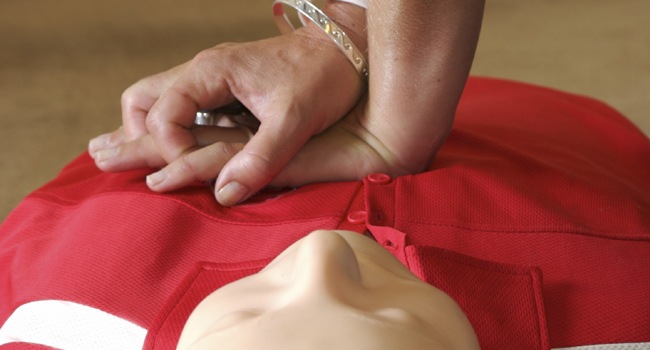
Head Up CPR - Effects of the cerebral and systemic hemodynamics?
In Seoul, South Korea, the researcher Keith Lurie dedicated his career on the hemodynamics of CPR. In particular, he began to dedicate work on the right position of the body during CPR.
He started from the fact that in Seoul there are so many apartment buildings, which usually are tight and with many floors. Elevators are often crowded and in case of a heart attack it is possible that there is a few space to treat a patient. So, with Sang Do Shin, a physician from Seoul, he started to ask if a patient could be trated with the head up and if it could be a safe solution.
Head up CPR: some tests
They tested this possibility with pigs. In the lab, they put the pigs into v fib and started treating them on a tilt table at 30 degrees head down and 30 degrees head up, with a mechanical chest compression device. During the CPR, blood flow in the heart and veins, such as coronary and cerebral perfusion pressures were monitored and Lurie discovered that the parameters were improving if the head of the pigs was up at 30 degrees. The pigs started gasping spontaneously in the head-up position.
Other angulations have been tested, i.e. 0, 20, 30, 40 and 50 degrees. However, the best result was given by the 30 degrees. Even if hemodynamic trials are very cumbersome to study in case of cardiac arrest, Lurie is about to test it in humans.
Another interesting study on the argument is been released by the Official Journal of the European Resuscitation Council:
Authors: Ryu HH, Moore JC, Yannopoulos D, Lick M, McKnite S, Shin SD, Kim TY, Metzger A, Rees J, Tsangaris A, Debaty G, Lurie KG.
Aim
Chest compressions during cardiopulmonary resuscitation (CPR) increase arterial and venous pressures, delivering simultaneous bidirectional high-pressure compression waves to the brain. We hypothesized that this may be detrimental and could be partially overcome by elevation of the head during CPR.
Measurements
Female Yorkshire farm pigs (n = 30) were sedated, intubated, anesthetized, and placed on a table able to elevate the head 30° (15 cm) (HUP) and the heart 10° (4 cm) or remain in the supine (SUP) flat position during CPR. After 8 minutes of untreated ventricular fibrillation and 2 minutes of SUP CPR, pigs were randomized to HUP or SUP CPR for 20 more minutes. In Group A, pigs were randomized after 2 minutes of flat automated conventional (C) CPR to HUP (n = 7) or SUP (n = 7) C-CPR. In Group B, pigs were randomized after 2 minutes of automated active compression decompression (ACD) CPR plus an impedance threshold device (ITD) SUP CPR to either HUP (n = 8) or SUP (n = 8).
Results
The primary outcome of the study was difference in CerPP (mmHg) between the HUP and SUP positions within groups. After 22 minutes of CPR, CerPP was 6 ± 3 mmHg in the HUP versus -5 ± 3 in the SUP (p = 0.016) in Group A, and 51 ± 8 versus 20 ± 5 (p = 0.006) in Group B. Coronary perfusion pressures after 22 minutes were HUP 6 ± 2 vs SUP 3 ± 2 (p = 0.283) in Group A and HUP 32 ± 5 vs SUP 19 ± 5, (p = 0.074) in Group B. In Group B, 6/8 pigs were resuscitated in both positions. No pigs were resuscitated in Group A.
Conclusions
The HUP position in both C-CPR and ACD + ITD CPR significantly improved CerPP. This simple maneuver has the potential to improve neurological outcomes after cardiac arrest.



